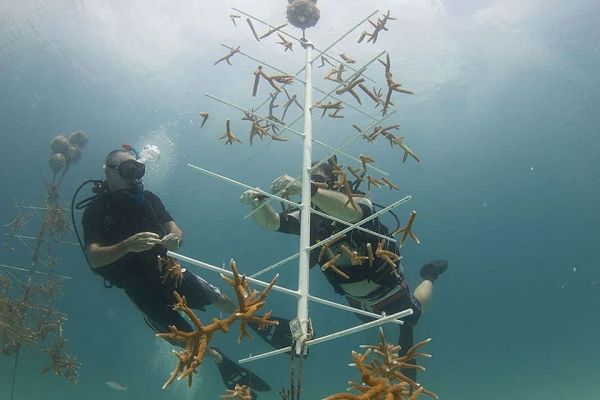Historically, coral conservationists have focused their efforts on protecting these invaluable marine resources from direct environmental threats, like land-based pollution and damaging fishing practices. While these efforts continue, researchers are now also looking at ways to tackle coral reef restoration more proactively.
Individual corals build reefs over thousands of years, but environmental stressors, and damage from events like ship groundings or storms, can destroy a reef in mere decades—or even less. Since the 1980s, episodes of coral bleaching have been happening more often, meaning that corals don’t have time to recover between these events. That’s why, to help save the corals, and the benefits they provide, conservationists now want to give more active assistance.
Over decades, conservationists learned how to grow corals in nurseries to repopulate damaged reefs. Coral “farmers” nurture small, found pieces of coral on underwater structures until they can be replanted on existing reefs, stimulating recovery of these ecosystems.
On average, the fastest growing hard corals (or stony corals) grow naturally at about the same rate as human hair—about 10 centimeters a year. Many only grow at fraction of that rate. This slow growth rate makes recovery from mass death events, such as bleaching or disease, challenging. But, in the low stress environment of a nursery, conservationists can grow corals much faster, giving the reefs a fighting chance.
Continue reading at NOAA.
Image via NOAA.


